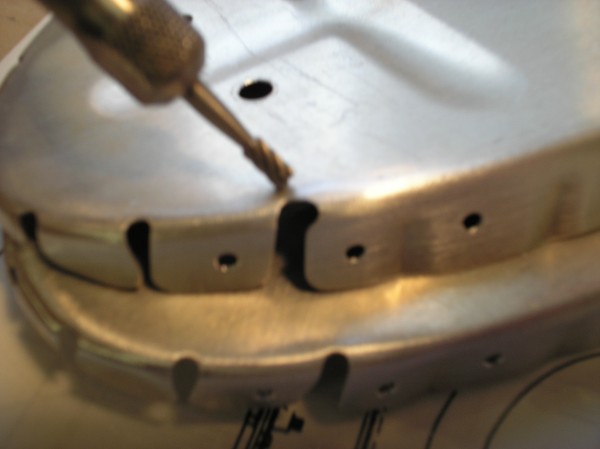Pilottonny
Well Known Member
Hello fellow builders,
You have not heard from me before on this forum. But, because I came across a problem that I could not find an answer for via the "search"-option, I have subscribed and are posting my first question:
I am currently fitting the leading edge-ribs and tank-ribs to the leading edge-skins and tank-skins and found it is merely impossible to cleco them in. I measured the distance between the most forward holes in the ribs and the skins and found there was a 3 to 4 mm?s difference between them. (so, when you get your wife?s measuring tape out of the sewing kit and lay it inside the skin, there is a difference of 3-4 mm?s between the distance of the most forward hole at the top of the skin and the most forward hole at the bottom of the skin and the distance of the same holes in the rib flanges, measured on the outside of the ribs). Even after bending the "rib-tabs" (the little flanges at the leading edge, without any holes in them) more inward, so the leading edge radius gets smaller, it is still very difficult, if not impossible to fit them in the skins. This is "dry"-fitting for match-drilling, imagine the final installation of the tank ribs with "Pro-seal"!
Has anybody come across this problem before? And how did you solve it?
Looking forward to receiving some fast answers from across the Atlantic,
Regards,
You have not heard from me before on this forum. But, because I came across a problem that I could not find an answer for via the "search"-option, I have subscribed and are posting my first question:
I am currently fitting the leading edge-ribs and tank-ribs to the leading edge-skins and tank-skins and found it is merely impossible to cleco them in. I measured the distance between the most forward holes in the ribs and the skins and found there was a 3 to 4 mm?s difference between them. (so, when you get your wife?s measuring tape out of the sewing kit and lay it inside the skin, there is a difference of 3-4 mm?s between the distance of the most forward hole at the top of the skin and the most forward hole at the bottom of the skin and the distance of the same holes in the rib flanges, measured on the outside of the ribs). Even after bending the "rib-tabs" (the little flanges at the leading edge, without any holes in them) more inward, so the leading edge radius gets smaller, it is still very difficult, if not impossible to fit them in the skins. This is "dry"-fitting for match-drilling, imagine the final installation of the tank ribs with "Pro-seal"!
Has anybody come across this problem before? And how did you solve it?
Looking forward to receiving some fast answers from across the Atlantic,
Regards,





